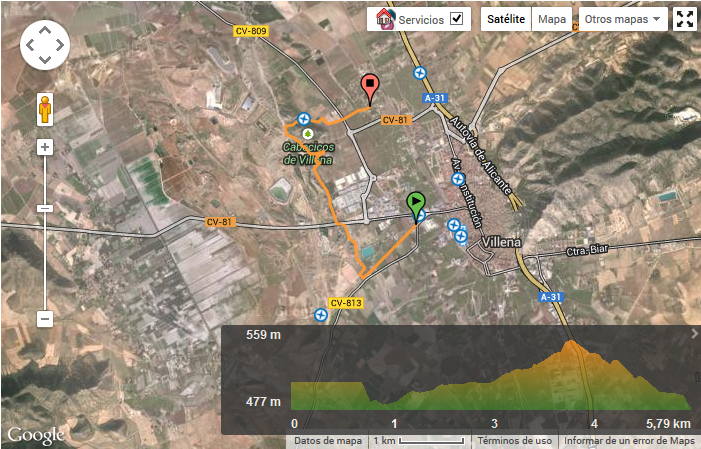Today introducing a very easy track, starting in the "Vía Verde del Chicharra", an ancient railway line recovered for walking / cycling use. It's very affordable for all levels (on the second part of the track I had my 5 years' old nephew as companion).
Beginning of route
At the end of the post you can find a Wikiloc track with pictures, available for download. I had some "technical problems" (low battery) and the final part is not included, but it's very easy to find the way back: just follow the road back to Villena for 2 kms.
There are 2 places to visit during this route: the archeological site of Cabezo Redondo and the Gypsum Ovens.
Cabezo Redondo archaeological site
General view of the archaelogical site
This place used to be a village during the Bronze Age (1700-1200 BC), with an estimated area of 10.000 square meters. Only a small part is excavated.
In this area was found the "Tesorillo de Villena" (Villena's small treasure), which I referred in a previous post. It has 34 gold pieces and can be visited in the Archaeological Museum of the city. Besides, on the site you can see many house structures made in wood and mud, as well as many ceramic remains, bones and graves.
In the Tourist Info Office of the city you can have information on the dates for visits, as the site is not always open.
Hornos de Yeso (Gypsum Ovens)
Hornos de Yeso (Gypsum Ovens)
The 3 gypsum ovens placed on the Cabezo de las Cuevas mountain were part of a local industry in the middle of 20th Century, but they were possibly built in the late 18th Century.
They have not a great historic interest, but I think it's a curious visit. On the place there is information about the production process of gypsum.
GPS Track (Wikiloc)
Bibliography
Villena Tourism Office - +34 966 15 02 36 - www.turismovillena.com
Excavaciones arqueológicas en el Cabezo Redondo. José María Soler, Biblioteca Virtual Miguel de Cervantes, 2005. Link to the source (In Spanish)
Generalitat Valenciana. Consellería de Educación, Cultura y Deporte. Servicio de patrimonio cultural. Link to the source (In Spanish)









